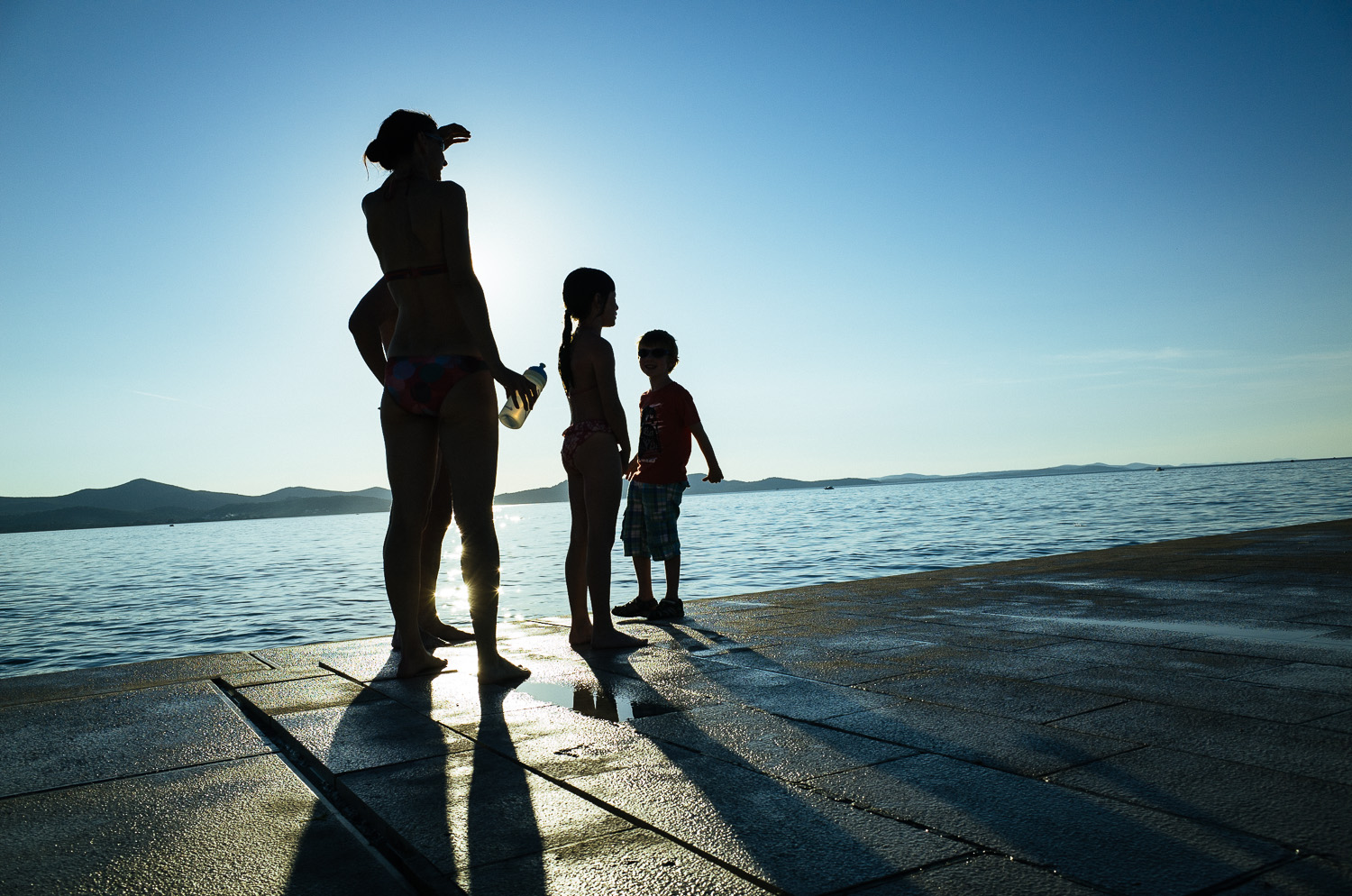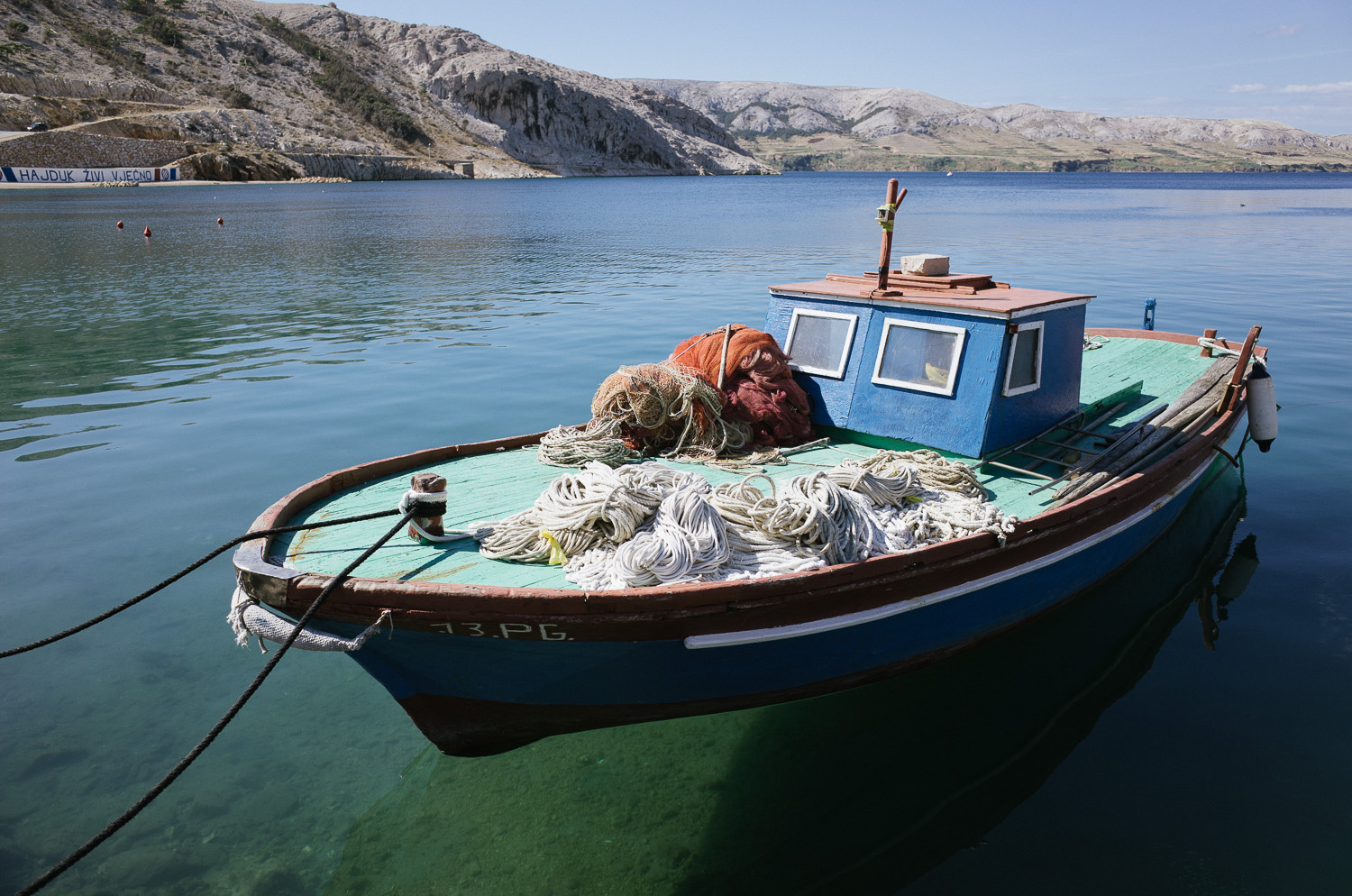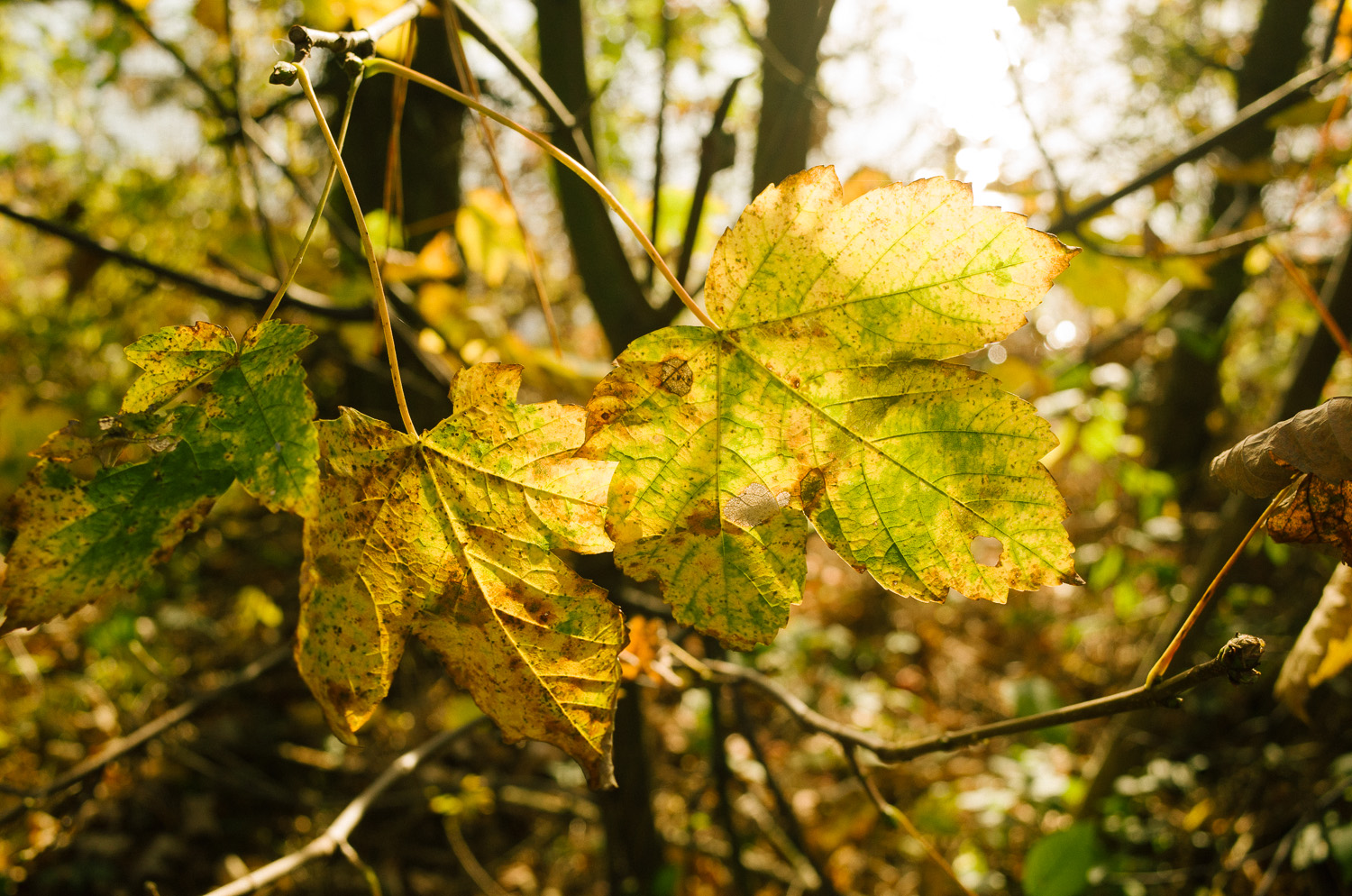 SONY NEX-5 (27mm, f/6.3, 1/125 sec, ISO200)
SONY NEX-5 (27mm, f/6.3, 1/125 sec, ISO200)
When traveling to foreign places people always recorded their memories. Today it is the same. Almost everybody takes images when abroad. The only thing that has changed over time is the camera. Everything from a smartphone to full frame DSRLs with a back bag full of lenses and a tripod. What I have seen so far is that smartphone photography is growing, tripods are declining.
There is no question why tripods are declining. Before digital many of us shot slide film. Fuji’s Velvia was one of the most popular films. With a real sensitivity of 40 ASA and a lack of image stabilization lenses it was clear that a tripod was needed to get sharp images in everything but bright daylight. Now with clean ISO 800 and 4 stop IS lenses there is no need to bring a tripod. Even the slightly blurred waterfall ( 1/15s ) can be achieved by relying on the image stabilization of the standard zoom. On my last trip to the USA I did not bring my tripod for the first time and I didn’t miss it.
There is also no question why smartphones are rising. Everybody has one. It is easy to upload to your Facebook or Flickr account or twit or send an email. Your friends see your picture right after you took it. The images are organized automatically by date or location and there is a fully automatic backup somewhere in the cloud. No need to mess around with the files on a computer. Very convenient. But it comes with a high price: Image quality is anything but good.
I’m sure some will regret that they took their images only with a smartphone instead of using a real camera.
So what to do if a smartphone is not an option and a DSLR is just to heavy and complicated? A couple of years ago the only option was a small digital camera with a sensor hardly bigger than the ones in our smartphones. Thanks to Olympus that has changed. Small cameras with big sensors are the perfect solution if you want to travel light but image quality is still important to you.
There are so many options today but one of the most consequent solutions is to get a small camera with a big sensor and an integrated lens.
Here I want to compare three of them:
- Fuji X100
- Sony RX100
- Ricoh GR
Three cameras that have two things in common: big sensors and integrated lenses ( X100 and GR have prime lenses, the RX100 has a “28-100mm” zoom ) but apart from that they are completely different. The picture above is misleading. The Fuji X100 is much bigger than the other two.
I will post only some images taken with the GR. There are plenty of RX100 and X100 images on my blog and thousands on the internet so I decided to show some pictures taken with the GR. I put them at the beginning of every chapter to make navigation easier if you want to skip i.e. the one that deals with images quality. This one:
Image quality:
 RICOH GR (18.3mm, f/5.6, 1/1500 sec, ISO100)
RICOH GR (18.3mm, f/5.6, 1/1500 sec, ISO100)
Let’s start with images quality. Good news first: All three of them deliver an image quality that is clearly better than what you get from any APS-C DSLR camera that is older than 5 years. That includes cameras like a Nikon D2X or in other words. What you get here is superior to what professional photographers used to shoot a couple of years ago.
So even the “worst” here, the Sony RX100 gives excellent images in good light and still very impressive images up to ISO 800. The other two are even better thanks to their much larger sensors. But there are other things to consider regarding image quality.
If you want to shoot JPEG and don’t want to post process your shots the otherwise great Ricoh GR is not an option. The Sony RX100 is very good in good light and the Fuji X100 is impressive.
The Sony and the Fuji have very reliable metering systems that get exposure right most of the time. The Ricoh tends to underexpose quite a bit and needs exposure compensation very often.
Ricoh’s Auto-WB is the weakest. Colors are too cool outdoors, it practically “kills” sunsets. The Auto-WB on the Sony is good but errs on the cool side too especially in shade but to a lesser extend than the Ricoh. Fuji’s WB on the other hand is the best in the industry. I shot Nikon and Canon DSLRs and a lot of other cameras but Fuji is clearly a step ahead of all the others. It almost never fails even in the most challenging light. Fantastic!
For the JPEG shooter the Fuji is the best option. The Ricoh GR can not be recommend because of its erratic metering and its Auto-WB reminds me on the old days of digital photography.
If you shoot RAW, which you should with this type of camera, all three deliver better image quality. The Fuji gains less than the other two. The Sony RX100 results are a lot better in low light, high ISO images. The Ricoh gives you the chance to correct AWB and exposure and delivers truly impressive, crisp images that are ahead not only of the Sony but also of the Fuji. The 16 MP sensor without low pass filter combined with a lens that is very sharp even wide open creates images comparable to a full frame camera. Crisp and sharp even when viewed at 100% in LR.
Summary: All three gain from shooting RAW but if you still insist in shooting JPEG the Fuji is clearly the best.
How do they feel in hand?
 RICOH GR (18.3mm, f/4.5, 1/50 sec, ISO100)
RICOH GR (18.3mm, f/4.5, 1/50 sec, ISO100)
Image quality wise all three are excellent. Of course the bigger sensors and the prime lenses result into better image quality of the Fuji and Ricoh but you don’t need to worry about the image with the Sony. It is so much better than what you get from a compact digital camera and in good light is is very close to the others.
The bigger difference is in the handling. The Fuji X100 is the biggest of the group and it handles best by far. This is no surprise. Unless you got very small hand a DSLR would be best, followed by a big mirror less camera like the Fuji XP1 followed by something like the Fuji X100.
The Ricoh handles very, very good too. It’s just a little bit longer than the RX100 but this 1 cm makes a big difference and of course the rubber grip. This camera practically sticks in your hand. Very safe one hand operation. The best of the three in this regard. It also has the right amount of knobs and the most useful mode selector in the history of digital cameras. I will come back to that later.
The Sony is the smallest and it’s too small for me. The slippery surface might look high tech and cool but it doesn’t help when holding the camera. I bought the original case. This overpriced, fake leather full case improves holding the camera a lot. It’s still not perfect but it works.
Controls:
 RICOH GR (18.3mm, f/4, 1/250 sec, ISO100)
RICOH GR (18.3mm, f/4, 1/250 sec, ISO100)
Fuji is best here. Old fashioned shutter speed dial, a very beautifully made aperture ring and exposure compensation. There is nothing else. Pure photography. Wonderful. No scene programs and no gimmicks. A great concept. And it’s success shows that a lot of people were just waiting for such a camera.
And there is this fantastic hybrid viewfinder. When I saw it first I was amazed. And here it makes perfect sense. There is just one lens so the optical viewfinder works just perfect. On my X100 I use the OFV on a regular base. On my XP1 I gave up to use it since I got the 14mm lens.
To sum it up: The X100 gives you a shooting experience that is hard to find. It’s completely different from a DSLR but it is truly great.
The Ricoh is much smaller. There is no aperture ring and no shutter speed dial or exposure compensation dial but it still handles fantastic. The reason: Ricoh optimized the GR concept now for many, many years. And this experience shows.
I pre-ordered mine and was ready to buy it but the low weight almost put me off. The camera felt hollow. But what I realized immediately was the interface. What a relief. Everything is at the right place and the shooting modes! I checked the Auto-ISO setting menu and was disappointed. No way to set the minimum shutter speed! I ranted about that in my RX100 review and in my XP1 review. It is just one bloody line in a menu. Nothing more! Still some camera makers just don’t get it.
But than I realized that Ricoh provided a perfect solution. Their own TAV mode. And this is how it works: You can set shutter speed and aperture manually, you can still use Auto-ISO and now comes the best part – exposure compensation still works. Perfect! Of course there is A, T, M, P-Mode, Pano- and Video Mode and best of all three MY settings. For the first time in my live the Mode dial is not just a waste of space. On my Canon 6D I only switch in between A and M – Mode and the whole dial makes no sense. On the GR it is extremely useful and it even is locked! No accidental changes!
Even the exposure composition works very good. No additional knob to push. Just dial in plus or minus that’s it. I bought it.
Compared to the other two the RX100 is clearly less enjoyable to use for experienced users. I think the RX100 works best if you set it to one of the auto everything modes, one of the scene modes or on P and leave it there. Don’t get me wrong. The Sony is not a bad camera. It is far from it. It’s just that when you leave the auto modes behind the camera is kind of awkward to use. It’s customizable but I never managed to make it work for me. Regarding user interface it feels like a compact camera.
On the other hand it is the first camera out of the three that I would recommend to people who just want to take good pictures without dealing with technical details. It has face detection AF, two Auto everything modes and a lot of scene modes. It has it’s user group. I just found out that it is not for me. For more details there is a review of the RX100 on my blog. If you consider the RX100 because of the zoom be warned. The lens is very slow when zoomed in. That means that ISO will go up like crazy. And if you consider IS ( image stabilization ) to be an advantage be warned again. It’s not very efficient on the RX100. I can shoot the X100 at lower shutter speeds than the RX100.
AF performance:
 RICOH GR (18.3mm, f/4, 1/1000 sec, ISO100)
RICOH GR (18.3mm, f/4, 1/1000 sec, ISO100)
Today the most important thing seems to be fast AF. I’m old enough to know from personal experience that there was a time before auto focus. And the pictures were sharp too maybe even more so than today. If fast AF without compromise is most important I got really bad news for you. You need to get a Canon 1DX or Nikon D4. Expensive, big and heavy monsters but truly outstanding performers. Everything else is a compromise.
If you don’t want to spent that amount of money or don’t want to lug around pro DSLRs there is still hope. Even an entry level DSLR like a Canon 700D focuses faster than any mirror less or big sensor compact camera. If you are looking for a camera to take pictures of your kids running around – get a DSLR.
Here we are talking about AF for static subjects only (I chose the boat picture to make that clear). Now who is the best out of the three? In good light there is not much difference. They all focus fast enough thanks to their fast lenses. In low light they act completely different. The GR gets extremely slow and sometimes refuses to focus at all. It reminds my on the Fuji before the firmware changes, maybe it is even worse. To use the GR in really poor light is a pain. The only option is to set it to snap focus and guess the distance.
The Sony is not a low light hero either. In real low light it acts similar to the Ricoh. It is a little bit better but without the chance to switch to snap focus it is even less useful when light is really low.
The Fuji X100 was a very poor performer too but a couple of firmware updates have transformed the camera. Now it is very good and easily the best of the three in poor light. Fuji has done a great job here. Maybe the X100s is even better but I would try that first.
Summary:
 RICOH GR (18.3mm, f/4.5, 1/250 sec, ISO200)
RICOH GR (18.3mm, f/4.5, 1/250 sec, ISO200)
All three camera have two things in common: Rather big sensors in small bodies and integrated lenses. Apart from that they are completely different. I hope that I was able to give you an idea of how it feels to shoot with these cameras.
If I sounded too negative on the RX100 don’t get distracted. It’s a fantastic camera it just doesn’t work for me. But that doesn’t mean that it will not work for you. For people who don’t want to deal with the technical part of photography this camera is the best of the three. It delivers great results in auto modes and has one of the most reliable exposure metering systems. Which one to get? The “old” RX100 or the RX100 II? There is a huge price difference but the tilt screen is hard to ignore. Value for money of the new one is, how to put it gently, not the best but this is true for the other two as well. They are perfect examples of economy of scale.
Maybe I was too positive about the GR because I enjoy it’s interface and the shooting experience so much but it is hard to ignore that the Ricoh has some serious drawbacks: exposure meter and WB issues and a lifeless JPEG output. Pictures need post processing! But to have an APS-C sensor camera in my pocket is something truly special. It is the most discrete and unassuming camera there is. Everybody will think that you are using a cheap compact camera as long as you resist the temptation to put the ugly and big lens shade or fancy straps on it. I use lens shades all the time but the GR needs a lens shade like a fish needs a bicycle. Because of its unassuming looks and the snap focus function this is a street photographers dream camera.
The Fuji X100 is the camera I used the most. I loved it from the first time I picked it up because of shooting experience and output. It has been vastly improved during it’s lifetime with various firmware updates. It’s the most complete of the cameras here but it is also not perfect. Compared to the others the X100 is not pocketable. I can put it in the pocket of my winter jacket when traveling but it is big and heavy compared to the other two. I love the “35mm” lens because it is more versatile and can be used for portraits too if you don’t get too close.
I know that in some places it is not possible to try them side by side in a shop but I strongly recommend to get them in your hands before you decide. They are completely different and there is a strong chance to get it wrong if you base your decision on reviews and second hand experiences. Regarding IQ you can’t go wrong as long as you shoot RAW but regarding handling you need to decide which one will work best for you.
